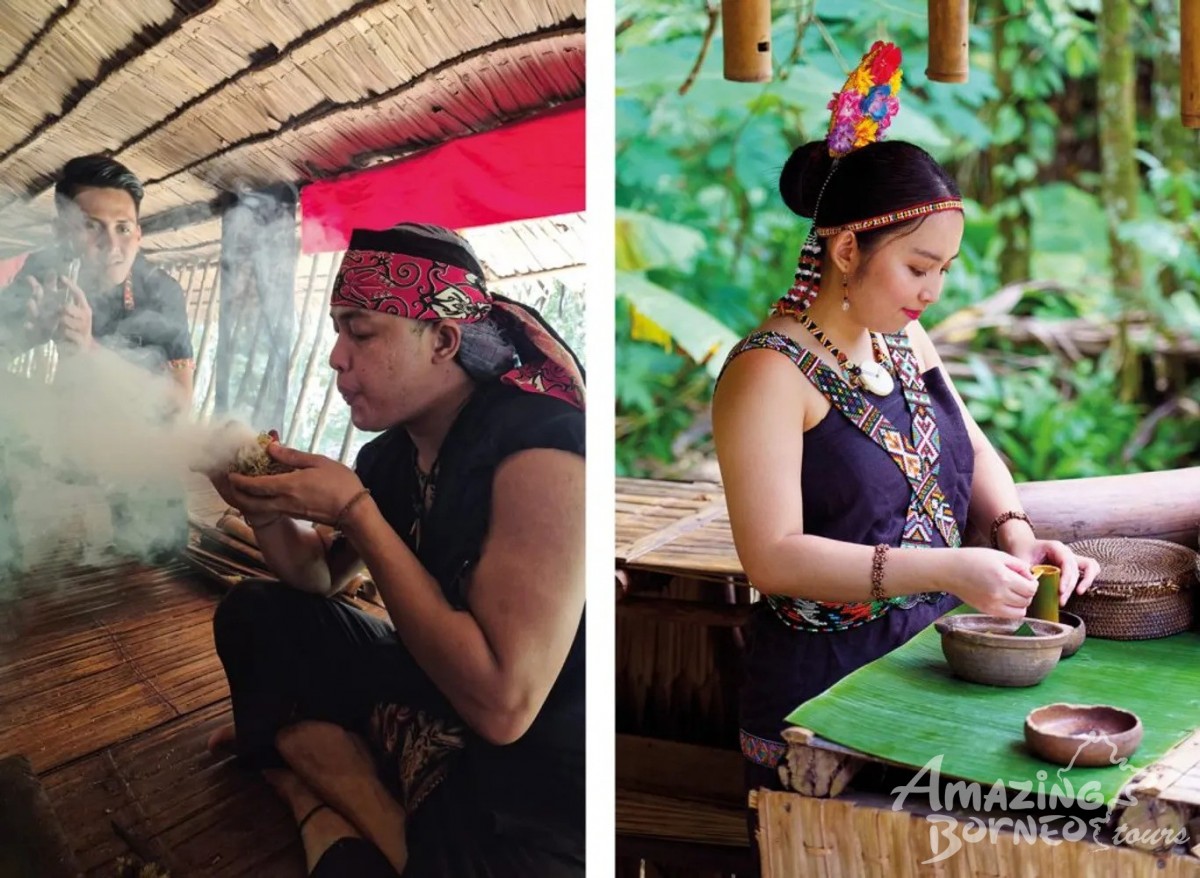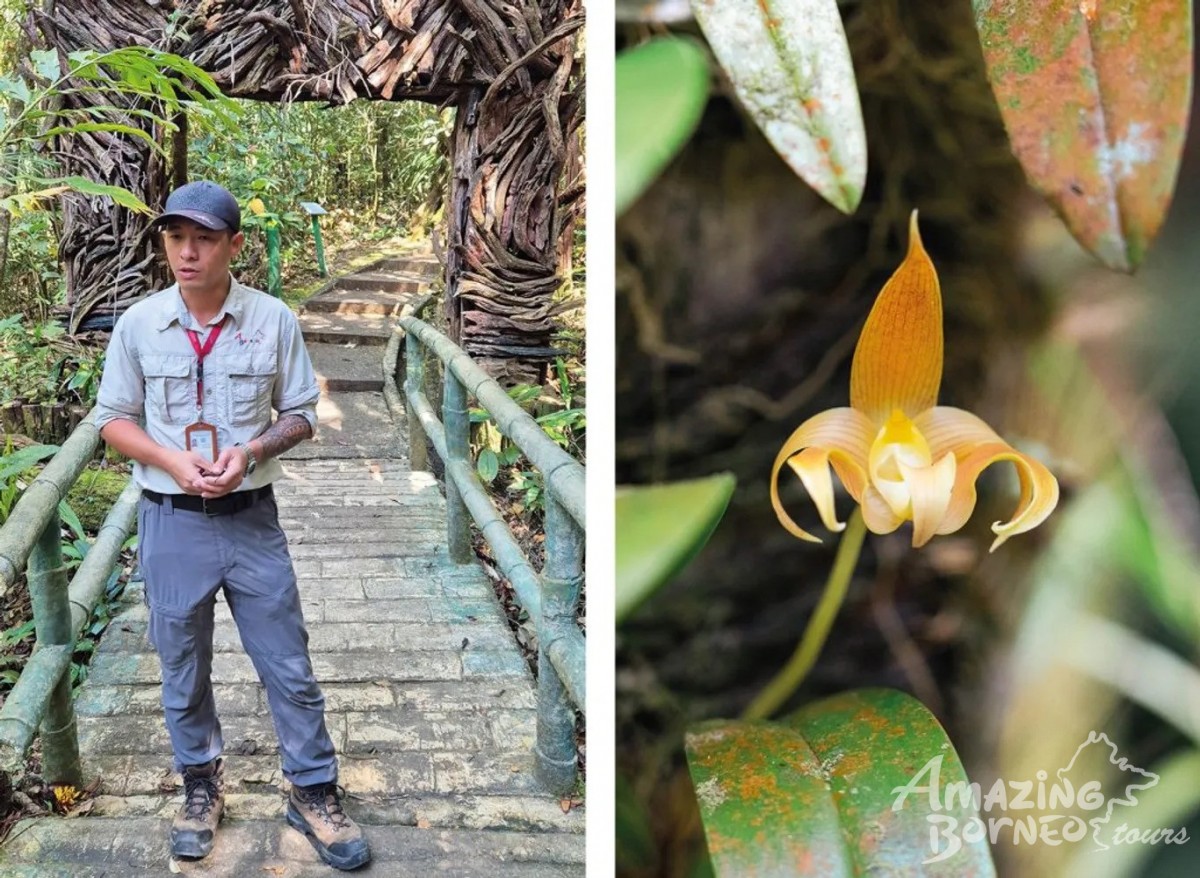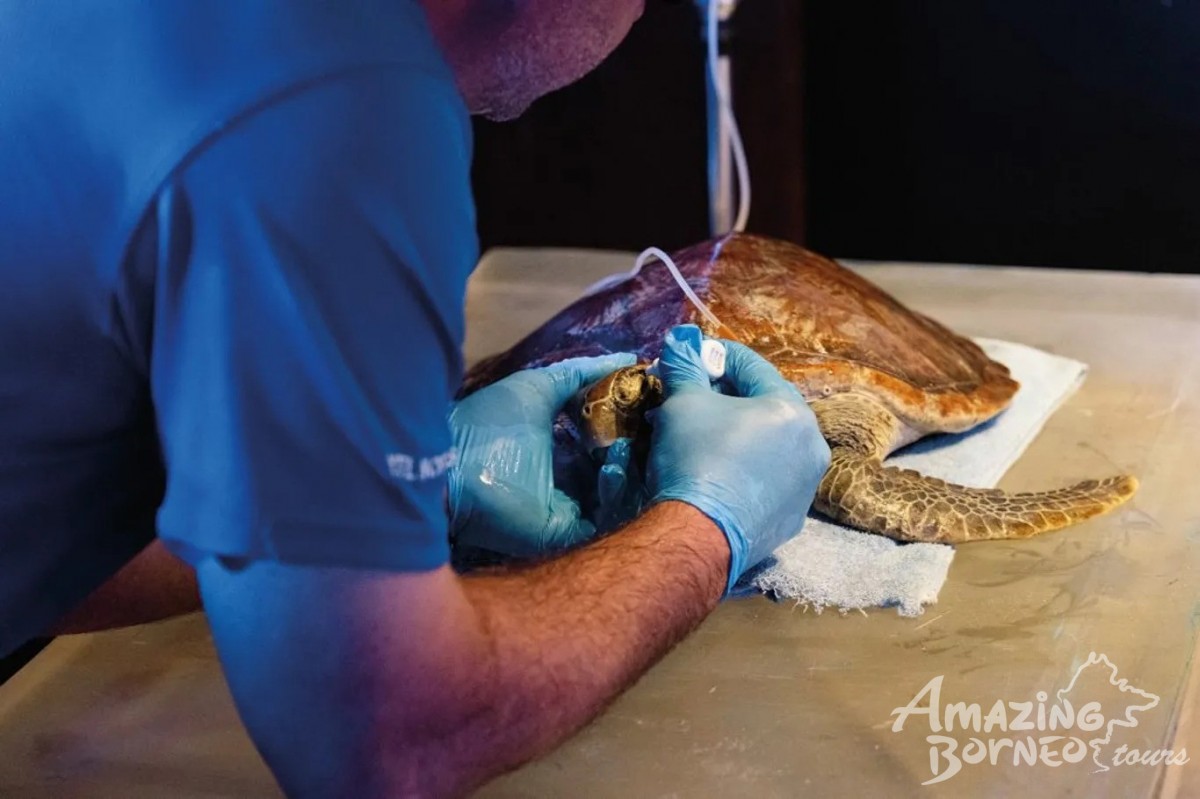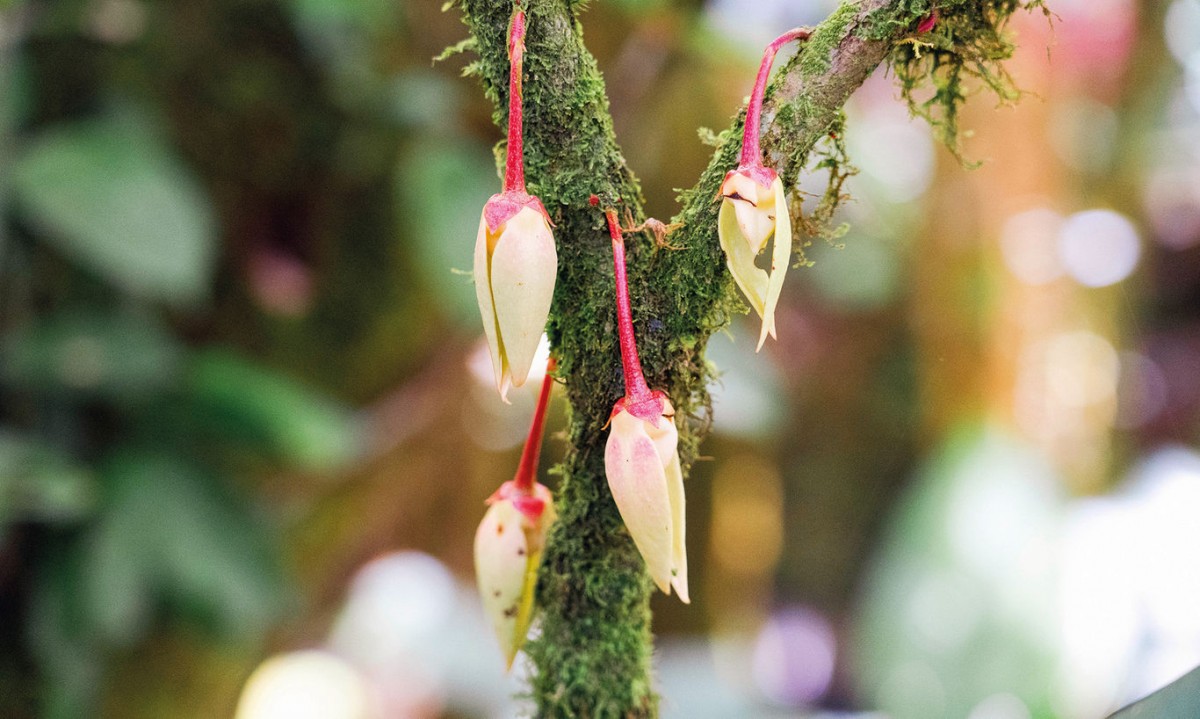A 30-minute drive from Sabah’s capital city, Kota Kinabalu, Mari Mari Cultural Village is tucked deep in the rainforest. Here, five indigenous tribes—the Kadazan-Dusun, Rungus, Lundayeh, Bajau, and Murut—share their ways of life not as relics, but as skills still relevant to the land.
On a recent visit, I wandered between bamboo longhouses and rice barns on stilts, the air smelling of woodsmoke and the ground soft from the morning rain. A Dusun elder demonstrated how to start a fire without matches before inviting me to test my skills. Let’s just say I didn’t pass. At the Rungus longhouse, women wove beaded necklaces in intricate geometric patterns, each design telling a story. Many of the guides and performers here were high school or uni students, assurance that these traditions are being handed down to the next generation.

Fire-starting class in Mari Mari Cultural Village, photo by Megan Sullivan (left) and a Rungus woman prepares honey at Mari Mari Village.
From the rainforest, our journey climbed to Kinabalu Park at the base of Mount Kinabalu. We stayed at Sutera Sanctuary Lodges, where mist curled over the peaks each morning and the crisp air reminded us how far we’d come from the coast.
To hike Mount Kinabalu is to journey across sacred ground. The Kadazan-Dusun people regard the mountain as the resting place of ancestral spirits, and the park operates with that reverence. Our guide, Joel from Amazing Borneo, spoke about trail maintenance and waste reduction with the same seriousness as weather safety.

Guide Joel from Amazing Borneo, in the botanical gardens (left) and a small Orchid on Mount Kinabalu (right).
The biodiversity here is staggering: pitcher plants the size of my hand, orchids clinging to mossy trunks, and birds dressed as if for a festival. Protections here include bans on single-use plastics and off-trail wandering, and limits on visitor numbers. Standing at the granite shoulder of the peak, I realised the real triumph is not reaching the summit, it’s that the mountain has remained intact at all, despite decades of pressure from logging, farming, and mass tourism.
After enjoying the cool mountain air, we headed down to the turquoise shallows of Gaya Island Resort. Here, at the marine center, conservation takes the form of rehabilitating injured sea turtles, restoring damaged coral, and educating visitors about the fragile marine ecosystem.

A rescued turtle receives eye drops at Gaya Island Resort Marine Centre.
We met Dato and Kutu, green turtles recovering from life-threatening injuries. Marine biologist Scott explained the slow process of rehabilitation—not just healing physically but retraining behaviors so they can survive back in the wild. When I asked what keeps the team motivated, one marine biologist put it simply: “We can’t undo all the damage, but we can give the ocean a fighting chance.”
I left Sabah convinced that the most enduring conservation efforts are the ones that weave together culture, ecology and education. It’s not easy work, but from what I saw in Sabah, commitment runs deep.

